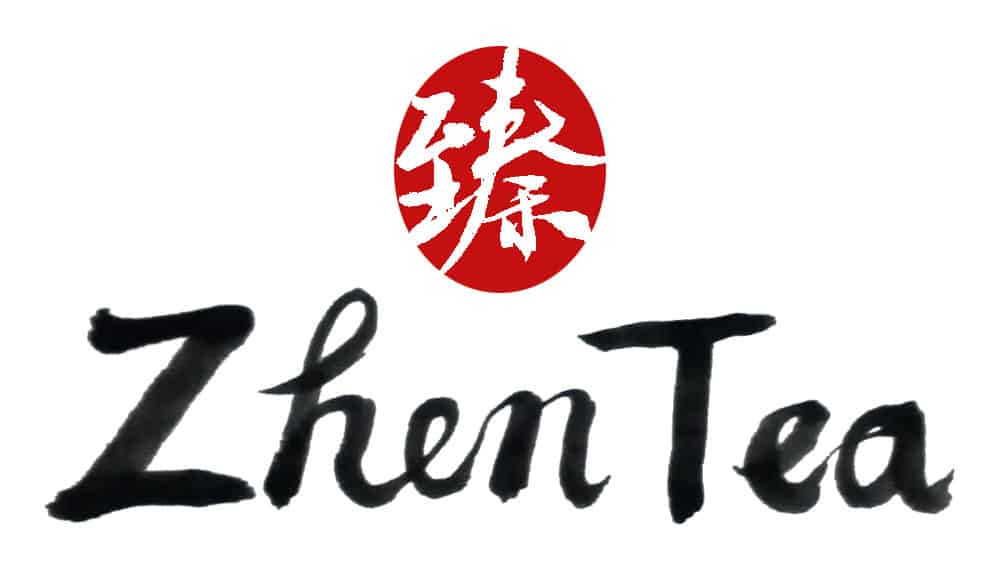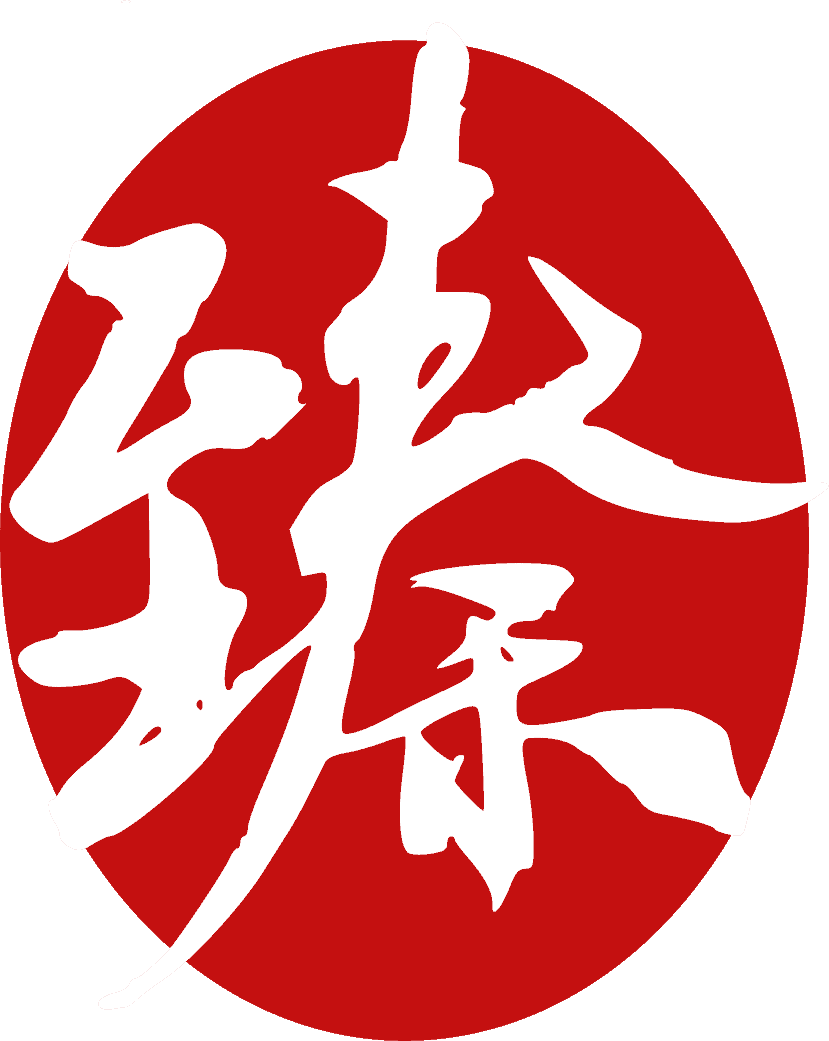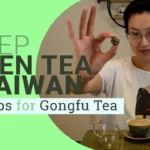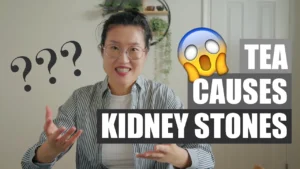Tea is often associated with health in North America. So much so that many people begin drinking tea just for its health benefits. Indeed, if you look up “benefits of tea” online, you’ll find very exciting and promising results. Many studies have shown that tea contains antioxidants, reduces the chance of heart attack and stroke, helps with weight loss, protects your bones, boosts the immune system, battles cancer and more! There are a mountain of studies out there on this topic. Google Scholar along produced 2’700’000 results at the time this was written! However, this video is not a roundup of numeric data about tea leaves and health claims, rather, we are going to look at tea and health from a different angle, an ancient perspective, Traditional Chinese Medicine. I’ll examine how this ancient wisdom viewed tea and health, but don’t worry I’m still going to answer those burning questions you wonder about the most, like caffeine content, which is the most healthy tea, and weight loss. So if you are interested in today’s topic, just keep on reading!
For those of you who are not familiar with TCM or Traditional Chinese Medicine, it is a traditional medical practice from China with thousands of years of history. TCM and western medical science are not mutually exclusive of each other. It’s not like you have to choose between A or B. They are explaining and answering the same things from the different angles, think of it like different languages, they have different sounds and grammars, but it’s not about right or wrong, as long as the result is achieved and the message is understood. For example, in TCM, the color black is related to the kidney which is a key of youthfulness (I know, the logic here sounds crazy from what we are familiar with), so eating dark foods like black beans and black sesame is a boost for the kidneys, and therefore helps to delay aging. In western scientific findings, foods with darker colors usually contain a high amount of anthocyanidin, a potent antioxidant, aka anti-aging. So in the end, we learned from both sides that dark color food can be great for our health, though the way we explained why was widely different.
Talking about tea and health, the most important thing is balance and integrating tea as part of an overall healthy lifestyle, just like any other superfood. For example, kale is healthy food. but if we get drunk every night, smoke 2 packs of cigarettes a day and sleep only 2 hours a day. Eating kale salad really can’t help much. So balancing the whole picture of lifestyle, rather than riding the train of a few superfoods to ease our guilt is key. Balance also means don’t overdo the “healthiest food”, rather enjoy a wide variety of foods. Celery juice is quite trendy, but celery is a veggie that attracts slightly more heavy metals compared to some other veggies. So if we consume an excessive amount of celery juice daily and minimize the diet to the few most healthy foods only, it might be too much. But if we have a balanced diet, a few sticks of celery with a wide variety of other food, like garlic or some kelp, which both help the body get rid of heavy metals, then there’s nothing to worry about. So is tea healthy? Well, with a proper quantity and combined with a healthy lifestyle, it’s a health boost. But drinking 10 L of tea a day is an unnecessary burden for the kidneys and is not healthy.
What is the healthiest tea? Well, which one is healthier, carrots or broccoli? Among the 6 tea types, the less processed categories like green, white, and yellow, tend to have more vitamins, amino acid and tea polyphenols, while the more processed tea type like oolong, black or dark tea have various enzymes that are activated during the process, and they have more theaflavin, thearubigins, or theabrownine which are even more powerful antioxidants than tea polyphenols. So the oxidation or fermentation process during tea making is not simply reducing healthy elements but transforming them. This is more like asking is it healthier to eat a tomato raw or cooked. Well, for vitamin C, eat it raw, if lycopene, we’d better cook it with oil. But seriously, why do we have to choose only one?! Just rotate the teas based on your mood, unless, you have a strong preference.
One of the most asked questions about tea is caffeine. Camellia Sinensis Tea House did some analysis on caffeine content in a wide variety of their brewed teas and published the results. Great of them, benefits us all and it busts the myth that black tea is high caffeine. But from the results, it seems so all over the map, caffeine in green tea can be high or low, so are there any general rules or some patterns? Yes, but it’s slightly complicated…
There are many factors that affect the caffeine content in the tea. The environment of the tea plants, like climate or altitude, the cultivar of the tea, the season of the pluck. Different parts of the plant also have different caffeine content. How the tea was processed also affects caffeine level, how it was stored plays a part too, and of course how we brew the tea also affect how much caffeine is in the liquor. So here are some examples that might help you get a rough idea of how much caffeine is in your tea. Big leaf cultivars have more caffeine than small leaf cultivars, so from solely the cultivar itself, Pu’er has more caffeine than green tea which are usually small leaf cultivars. The higher the altitude of the tea garden, the less caffeine the plant needs, because caffeine is like the plant’s natural pesticide, and the higher the altitude, the less pest hassle it has. Also, within the same tea plant, young buds contain more caffeine than lower parts of the plant, like mature leaves or stems, which brings green tea, again, to the top of the caffeine billboard. The process is another big factor that affects caffeine in tea leaves, especially long, slow roasting, which greatly reduces the caffeine content. That means some oolong teas, black teas and white teas can be low in caffeine. The traditional process for many teas contains this step. Fermentation is another step that could transform caffeine, that’s why Shu Pu’er is often considered as a good night-time calming tea. But studies also find that wet storage generates some caffeine in the leaves while dry storage minimizes it. And when we infuse the tea, lower water temperature and shorter steeping time help reduce the caffeine level in the liquor, but of course, we also reduce many nutrients by doing so. Are you feeling dizzy yet?
An interesting thing I want to point out from the Camillia Sinesis analysis is that 2 Long Jing teas have different caffeine concentrations. As we get to know tea, we gradually learn that tea has different types, and even green tea are not all the same, there are many different green teas. And you probably already realized that a Chinese tea’s names don’t lock it down to one specific tea, there are many grades or makes/versions of the tea. Different stores have different Long Jings, they all look and taste differently. And as mentioned earlier, many factors affect the caffeine levels in the tea. The analysis table definitely helps us map out the caffeine concentration of some teas, but we can’t obsessed with the number itself, not all Lu’an Gua Pian has 60 mg of caffeine, not all Shu Pu’er has 25 mg of caffeine.
If you have caffeine concerns, drinking tea is definitely better than coffee. Besides statistically lower in caffeine level compared to coffee, tea also has a unique element call L-theanine, which counteracts caffeine’s effects, reducing the uncomfiness that caffeine often brings. L-theanine also works with caffeine to enhance mental concentration and reaction. That’s why some people feel that drinking tea is mind-clearing and calming, rather than fidgety.
However, I also find that everyone’s body reacts to caffeine quite differently. The same tea could give some people sleeping problems but might not register on another’s caffeine radar. So if for some reason, you can’t sleep easily after some tea or coffee, here is a little tip for you. Gently massage between your eyebrows and slowly bring it to the hairline, and repeat. I can usually put Phil to sleep within 5 minutes using this trick, which is very helpful to me after wakening up repeatedly by his tossing and turning. And this also works great for those who have sleeping problems, especially when the main symptom is having trouble falling asleep.
Tea and weight loss is another hot topic. Many studies have shown that the antioxidants in teas, such as EGCG, thearubigins, or theabrownine, prevent the body from absorbing fat and promote the breaking down of fat cells. But why do some people say I drink a lot of tea and didn’t lose any weight? Well, it’s like exercise help lose weight but it also has to work with a proper diet and lifestyle. Those things are always intertwined. It’s hard to pick one and ignore the rest and ask for an absolute result. So adding tea to your routine when trying to lose weight will only do you good. Then, what tea would I recommend for those who want to lose some weight? Dark tea! From a historical diet perspective, dark tea works wonder to help digest meat. Dark tea has been vital for nomads throughout history, and a nomadic diet relies heavily on meat and dairy. There’s a saying about nomads, they can go 3 days without food, but not 1 day without tea. That’s why the famous tea horse road exists. From today’s view, tea and horses sound like luxury items, but at that time tea and horses were strategic materials for both sides. So definitely try some dark tea for weight loss and there’s a very effective point you can massage regularly to help too. The Feng long point, an essential point for weight loss in TCM. It adjusts metabolic issues, helps regulate blood pressure, blood sugar. You can massage this point at home easily when you are reading or watching YouTube. Remember this point need strong stimulation, but of course, within your own tolerance.
You might have heard of all the benefits of Ginseng. But in TCM, there’s a saying, ginseng kills people without being blamed. This saying points out the key notion that when consuming in the wrong situation, even good things can do harm. This also applies to tea.
TCM categorized things into a spectrum, cold-cool-neutral-warm -hot, not based on literal temperature, but property. Our body state can also be categorized as such. Neutral is considered the best and healthiest state, while it’s also normal to have some imbalance in the body. And we ourselves can help bring our body back to balance by slightly adjusting our diet and habits, in which tea could assist us.
- If your body shows signs of cold, eating something that has a warm property would help bring the body back to balance. Some sign that your body might be leaning toward cool side: easily feeling cold, like to dress a bit more, prefer warm food, can’t have iced beverage or even salad, if having something warm on your belly feels really comfy, unconsciously cross your arms in front of your body a lot. Black tea, deeply oxidized and roasted oolong, and fermented tea like Shu Pu’er or aged tea are considered to have a neutral to warming property, which is great for these people.
- But if your body shows signs of heat, having something that has cool property is what you need. If you suffer from bleeding gums though you floss regularly, always craving food, can’t tolerate warm drinks, occasional nose bleeds, acne on the forehead area, try some green tea, white tea, or green oolong. It will help with these symptoms.
In the end, tea is not a panacea, nothing is. Healthy lifestyle, healthy emotion and mental state combined with other healthy elements is the way to go.
Keep steeping!









